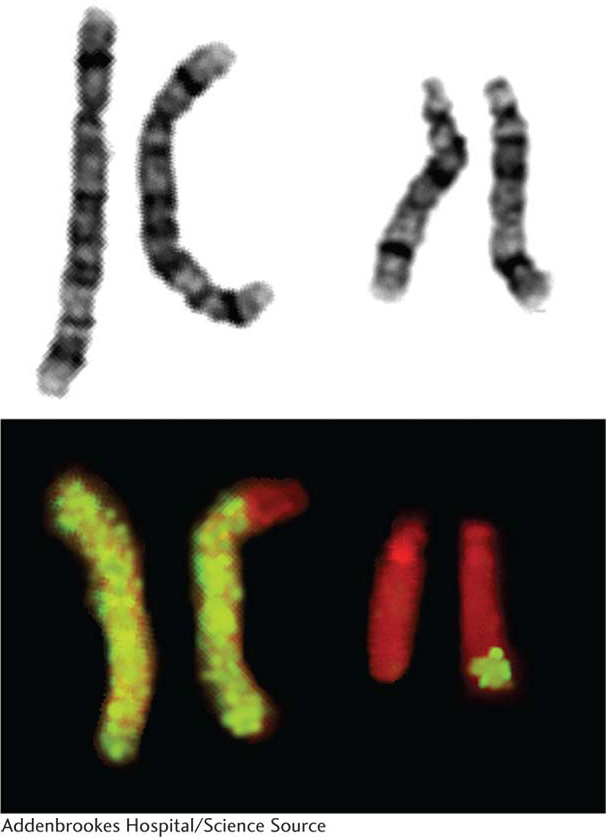
A reciprocal translocation demonstrated by chromosome painting. A suspension of chromosomes from many cells is passed through an electronic device that sorts the chromosomes by size. DNA is extracted from individual chromosomes, denatured, bound to one of several fluorescent dyes, and then added to partly denatured chromosomes on a slide. The fluorescent DNA “finds” its own chromosome and binds along its length by base complementarity, thus “painting” it. In this example, a red and a green dye have been used to paint different chromosomes. The figure shows unpainted (above) and painted (below) preparations. The painted preparation shows one normal green chromosome, one normal red, and two that have exchanged segments.
[Addenbrookes Hospital/Science Source.]